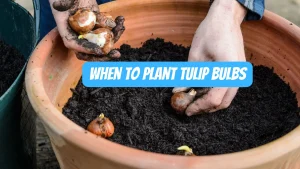How to Care for a Tulip Plant: Detailed Guide
Tulips are famous in the flower world for their beauty and colorful hues. Caring for them requires a little attention and the correct information. Here, we will provide you with the necessary tips and guidance for caring for tulip plants.
- Choosing the Right Soil
Tulip plants love soil with good drainage. Therefore, it is best to use loamy or sandy soil. Adding a little fertilizer to the soil helps the plant grow. - Planting
Tulip bulbs should be planted in a deep and relaxed environment. The best time to plant them is autumn (September to November) so they can take root in winter and bloom in spring. Plant the bulbs at a depth of 4-6 inches and leave enough space between them so that they can spread. - Watering
Tulip plants do not require much water. Watering once a week is enough, especially when the soil feels dry. However, waterlogging can cause the bulbs to rot. - Sunlight
Tulip plants prefer 6 to 8 hours of direct sunlight a day. If you are planting them in a pot, ensure the pot is placed in a place that receives adequate sunlight. - Manure and Fertilizer
It is beneficial to give the plants light fertilizer in the spring before they bloom. However, too much fertilizer can damage the plant’s roots. - Temperature and Climate
Tulip plants prefer a cool climate, with ideal temperatures below 15°C. During summer, it is advisable to keep them in a shady place. - Pest and Disease Control
Tulip plants are often prone to pests and diseases, such as aphids, tuber worms, and fungal diseases. Use organic sprays or insecticides for pest control and check the plants regularly. - Pruning and cleaning
When the flowers fade after blooming, carefully cut them off. This conserves the plant’s energy and allows the roots to grow stronger for the next season. Leave the leaves until they are completely dry. - Winter Care
In winter, spread mulch (a layer of leaves or straw) on the soil to protect the tulip plants from extreme cold. This protects the bulbs from the cold and provides nutrients to the roots. Even if you live where it snows, mulch helps protect your plants. - Replanting
Tulip bulbs do not need to be replanted every year, but if you want to plant them in a new location for more healthy and beautiful flowers, you can do this. To prepare for the next season, keep the bulbs in a cool and dry place for a few weeks before planting. - When to Remove the Plants
If your tulip plants have become weak or stopped flowering, you can remove the bulbs. The bulbs can be kept dry and replanted the following season. This step will help your tulips stay healthy for a long time. - Decoration and Beauty
Tulip plants can beautify the garden or home environment. Planting them in pots or along garden borders creates a colorful scene. Proper water, sunlight, and nutrition will help them bloom for a long time.




